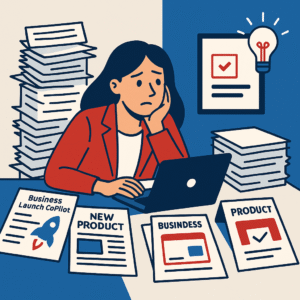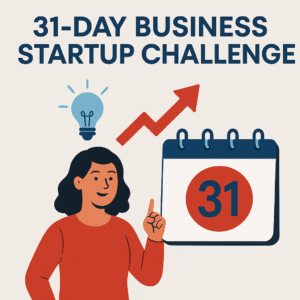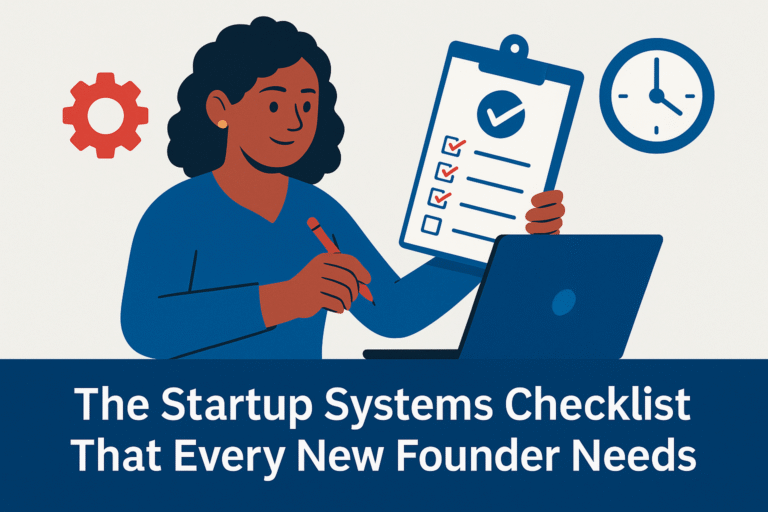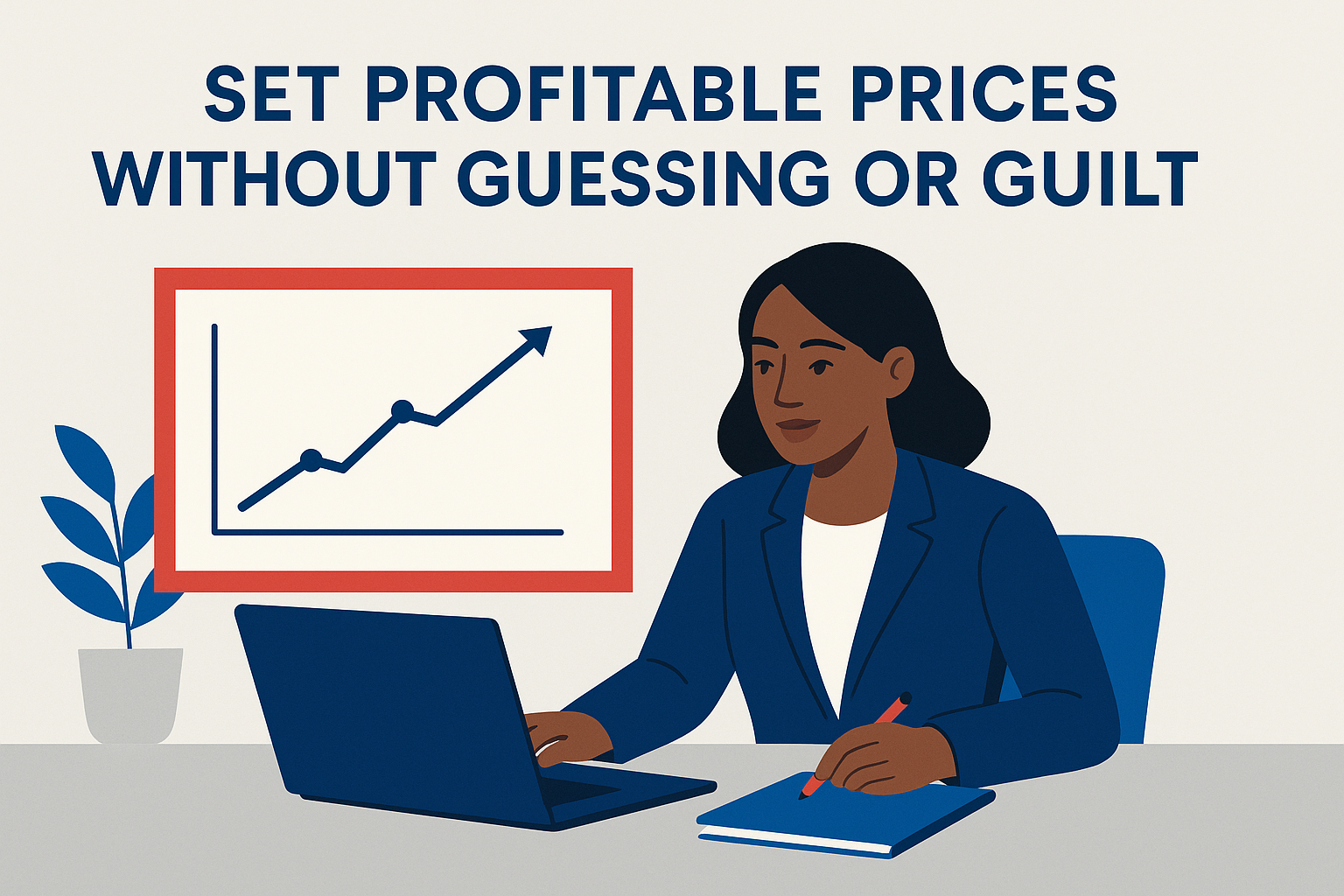Startup Saturday
 When you’re starting a business, it’s easy to get trapped in endless planning and overbuilding, instead of building a minimum viable product. I know—I’ve been there myself, spending way too much time trying to perfect my first offers before even testing them.
When you’re starting a business, it’s easy to get trapped in endless planning and overbuilding, instead of building a minimum viable product. I know—I’ve been there myself, spending way too much time trying to perfect my first offers before even testing them.
In fact, I have to admit I was a bit of a hypocrite.
By day, I work with business units helping them improve their workflows. I’m always saying: “It doesn’t have to be perfect. The product is meant to evolve. If something needs to change, we’ll change it.” Yet somehow, when it came to building a minimum viable product for my own business, I ignored my own advice.
I spent months developing and refining multiple offers instead of presenting what I had and letting it evolve through real feedback. It wasn’t until six months later—when I finally registered Backbone America—that I decided to pull the trigger.
Honestly? I only registered it to force myself to take action.
Some of my offerings worked. Others flopped. But what stung was realizing how much time I lost trying to perfect the wrong things. If I had just tested one product early on, I could have learned faster, saved energy, and grown more strategically.
That’s why today, I strongly recommend that you build a minimum viable product—not just for speed, but for clarity. You don’t need a polished suite of offers to launch. You need one thing that solves one problem well—and a willingness to improve from there.
What Is a Minimum Viable Product?
A minimum viable product (MVP) is the simplest version of your product or service that still delivers value. It’s not about cutting quality—it’s about cutting unnecessary complexity. What that looks like depends on your industry. Here are some examples to spark ideas:
- Service Business MVP: A solo coach offering one signature 1:1 package instead of a full course, group program, and resource library.
- Online Course or Education MVP: Hosting a single live Zoom workshop with a downloadable PDF — before building a full evergreen course platform.
- Software or App MVP: A basic web app with just the core function (like uploading files or scheduling appointments) before adding features like dashboards, notifications, or integrations.
- Retail or Product-Based MVP: Selling one physical product variation (ex: one flavor or one color) through a single landing page before expanding to multiple SKUs or building a full Shopify store.
- Consulting MVP: Starting with a free 30-minute audit call and a one-page action plan before offering multi-month retainers.
- Content Creation MVP: Publishing one valuable lead magnet or a weekly newsletter to test content interest before launching a full blog, podcast, or YouTube channel.
By keeping it lean, each of these examples shows how you can test your offer, gather feedback, prove your concept, and improve based on what customers actually need, not just what you think they want.
How to Fast-Track Your Startup by Building a Minimum Viable Product
1. Solve One Core Problem
 Don’t try to be everything to everyone. Pick one urgent problem your ideal customer has—and solve it really well.
Don’t try to be everything to everyone. Pick one urgent problem your ideal customer has—and solve it really well.
When I relaunched, I focused on just one thing: helping people start their business, even if they felt overwhelmed or unsure of where to begin. That’s why I created the 31-Day Business Startup Challenge. I wanted to provide an easy entry point for aspiring entrepreneurs—a clear, guided path they could follow one day at a time. It wasn’t just about content; it was about momentum. And honestly, it was also strategic. I kept thinking, “What are you going to automate if you don’t even have a business yet?”
It was my way of meeting people where they were. I genuinely enjoy helping others launch their vision, and this challenge let me be a part of that foundational step—while keeping things lean and focused.
As feedback came in, I improved the offer, added structure, and introduced support systems. But it all started with one clear problem and one streamlined solution.
2. Deliver Your MVP with Free, Simple Tools
You don’t need a fancy app, a full client portal, or complicated automation to launch a business. In fact, using basic, accessible tools in your minimum viable product phase is often the smartest choice—because it allows you to focus on validating your offer, not fighting with tech.
Here’s how you can use simple tools effectively when building a minimum viable product:
Google Docs or Notion: Deliver worksheets, onboarding materials, or even your entire course outline in a shareable document. No design, no platform setup—just the information your customer needs to take the next step.
Zoom or Google Meet: Offer coaching, consultations, or service delivery through live video calls. It’s personal, easy to schedule, and keeps you from building a course or backend before it’s needed.
Stripe, PayPal, or Square: Collect payments fast without having to set up WooCommerce, a full cart system, or complex invoicing automation. These platforms make it easy to get paid and track revenue from day one.
Email (Gmail, Zoho, or ConvertKit): Use email manually or with basic automation to deliver PDFs, follow up after sessions, or send next steps. You don’t need a full CRM to stay organized in the beginning.
The goal here isn’t to look “impressive.” It’s to prove your business concept works—and that people are willing to pay for what you’re offering. That’s exactly what the Lean Startup method advocates through its focus on building a minimum viable product early, launching fast, and learning from customer feedback. This article from Harvard Business Review explains how simplicity and testing—not perfection—lead to real traction.
When I launched the 31-Day Business Startup Challenge, my delivery was scrappy at first. Google Forms, calendar links, and shared documents did the heavy lifting. That early traction gave me the clarity (and confidence) to improve the structure over time—and I’m still improving it today. Every round of feedback gives me new insight into what’s helpful, what’s missing, and what could be streamlined. Instead of rebuilding an entire platform from scratch, I’ve been able to grow it intentionally—layer by layer.
3. Gather Feedback and Improve Iteratively
 Instead of building out every possible feature or service at once, get your first version live, then collect feedback. Small improvements based on real data will save you months (and sometimes years) of wasted effort.
Instead of building out every possible feature or service at once, get your first version live, then collect feedback. Small improvements based on real data will save you months (and sometimes years) of wasted effort.
As I mentioned earlier, I spent a lot of time developing products I wasn’t sure anyone actually wanted. I just assumed someone might need them, so I built them—refining, tweaking, delaying—always aiming for perfection. And as a result? I didn’t launch. I stayed stuck in creation mode.
But there was one product I approached differently: the 31-Day Business Startup Challenge.
Before I built out all the materials or finalized the format, I started talking to people I knew who had said, “I want to start a business, but I don’t know where to begin.” I shared the idea in its rawest form and asked simple but powerful questions:
Would this kind of structure help you?
What would make this easier for you to commit to?
How much would you feel comfortable investing in something like this?
They weren’t paying customers yet—but they were real people with real needs, and their feedback shaped the direction of the offer more than any “perfect” draft I had sitting on my hard drive.
This shift in approach changed everything.
You don’t need to launch with a polished platform. You just need to start conversations early—so you build based on real needs, not just assumptions. If I’d taken that same approach with my earlier products, I would’ve saved months of time and frustration.
Final Thought
Building a minimum viable product doesn’t mean settling for “good enough.” It means focusing on what actually matters: solving real problems, delivering real value, and learning fast. If you want to launch faster and protect your time, skip the endless building phase—and start simple. Your future business (and your future self) will be so glad you did.
If you want to launch faster and protect your time, skip the endless building phase—and start with one simple, meaningful offer. Get it in front of real people. Listen. Adjust. Grow. Because clarity doesn’t come from planning—it comes from trying.
If you’re still in the early stages, take the Business Launch Assessment to figure out where to start. It’s a fast way to pinpoint what’s ready, what needs work, and what your first offer could look like.





